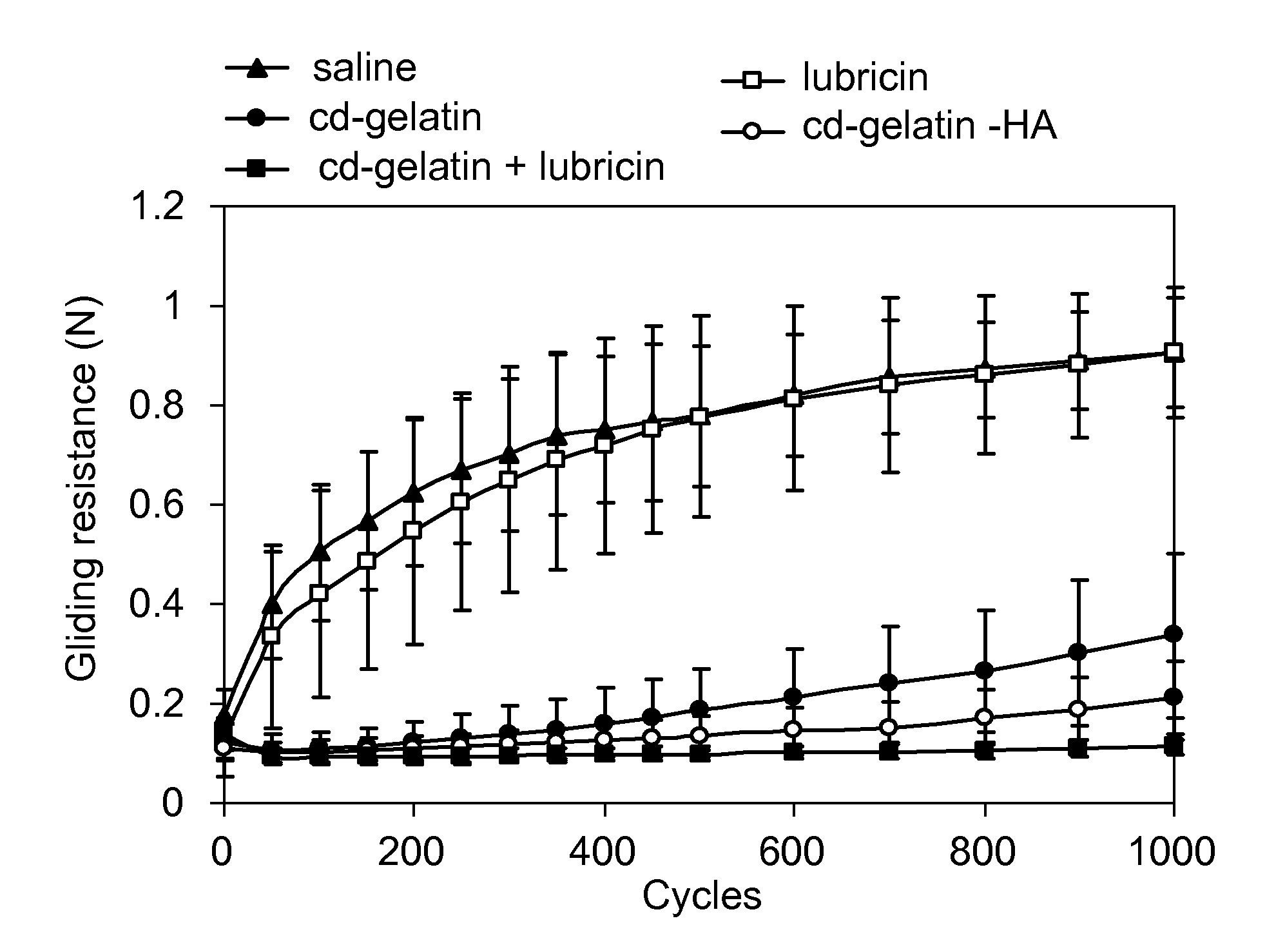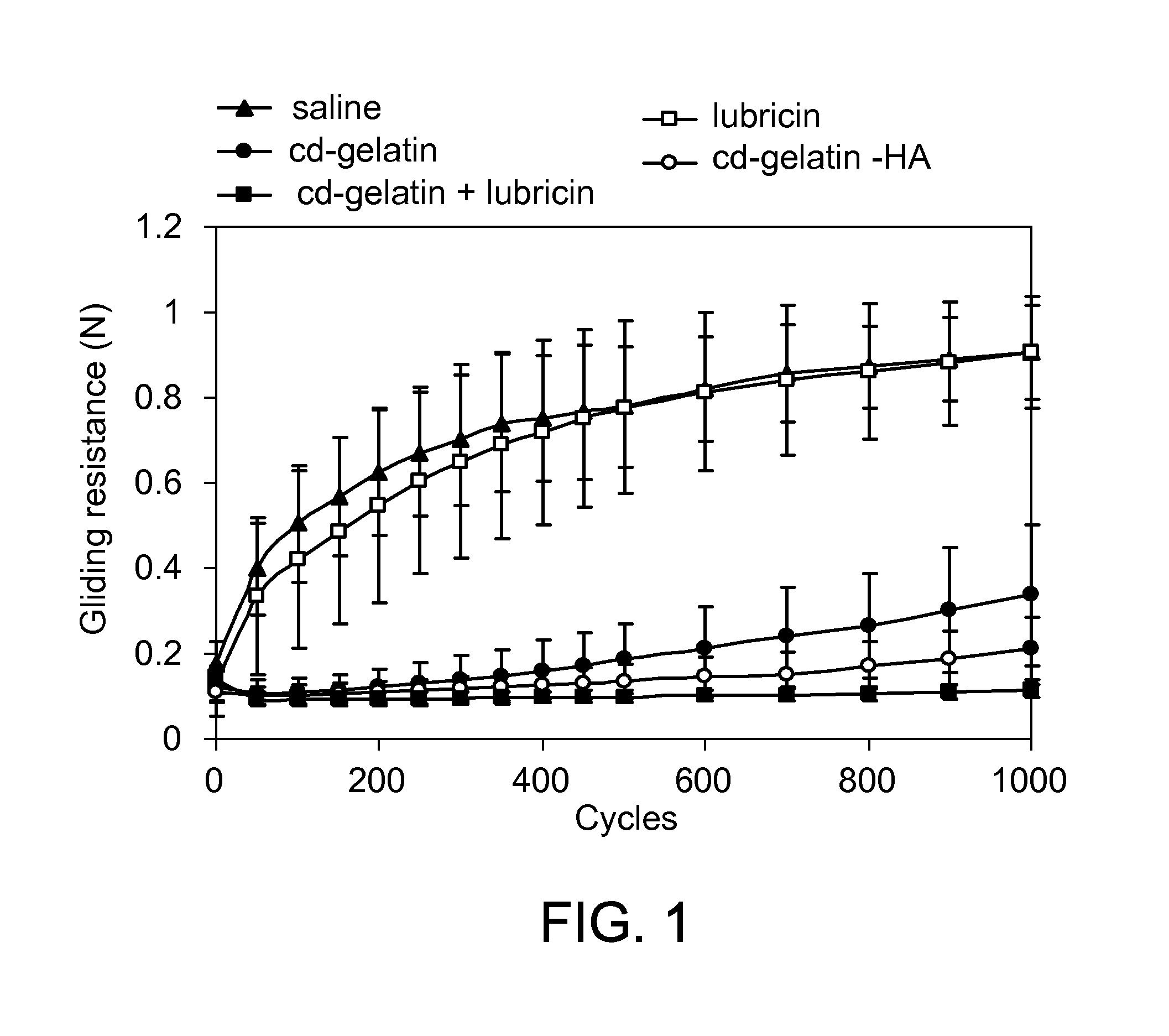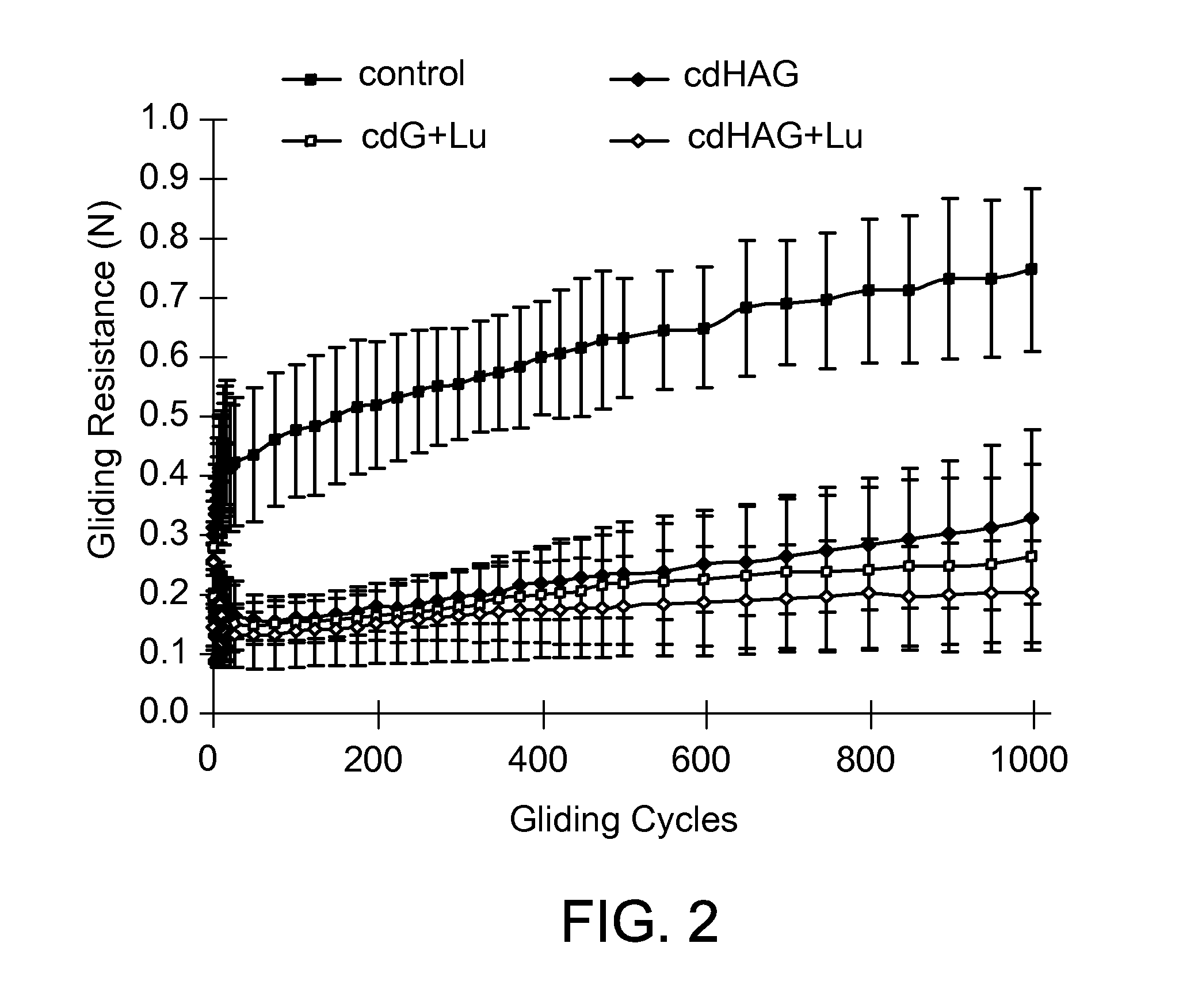Methods and materials for tissue repair
a tissue and tissue technology, applied in the field of tissue repair methods and materials, can solve the problems of limiting the active range of motion or impairing organ function, disturbingly high failure rate or residual impairment, and preventing adhesions often impair healing
- Summary
- Abstract
- Description
- Claims
- Application Information
AI Technical Summary
Benefits of technology
Problems solved by technology
Method used
Image
Examples
example 1
Lubricin Surface Modification Improves Extrasynovial Tendon Gliding
[0058]Forty peroneus longus tendons, along with the proximal pulley in the ipsilateral hind paw, were harvested from adult mongrel dogs. After the gliding resistance of the normal tendons was measured, the tendons were treated with one of the following solutions: saline solution, lubricin, carbodiimide derivatized gelatin (cd-G), carbodiimide derivatized gelatin with hyaluronic acid (cd-HAG), or carbodiimide derivatized gelatin to which lubricin had been added in a second step (cd-gelatin plus lubricin). Tendon gliding resistance was measured for 1000 cycles of simulated flexion-extension motion of the tendon. Transverse sections of the tendons were examined qualitatively at 100× magnification to estimate surface smoothness after 1000 cycles.
[0059]There was no significant difference in the gliding resistance between the tendons treated with saline solution and those treated with lubricin alone, or between the tendons...
example 2
Lubricin Surface Modification Improves Tendon Gliding after Tendon Repair in a Canine Model
[0061]Thirty-two canine FDP tendons from the second, third, fourth, and fifth digits were completely lacerated and repaired with a modified Pennington technique. After the gliding resistance of the repaired tendon was measured, the tendons were treated with one of the following solutions: saline, carbodiimide derivatized-HA-gelatin (cd-HA-gelatin), carbodiimide derivatized-gelatin plus lubricin (cd-gelatin+lubricin), and carbodiimide derivatized gelatin / HA plus lubricin (cd-HA-gelatin+lubricin). After treatment, tendon gliding resistance was measured for 1000 cycles of simulated flexion / extension tendon motion. The surface of the repaired tendon and its proximal pulley was then assessed qualitatively for surface smoothness by scanning electron microscopy (SEM) after 1000 cycles. The increase in average and peak gliding resistance in cd-HA-gelatin, cd-gelatin-lubricin, and cd-HA-gelatin+lubrici...
example 3
Bone Marrow Stromal Cell Seeded Gel Matrix and Tendon Repair
[0063]To investigate methods of preserving the anti-adhesive effects of surface modification with lubricin and HA while augmenting the healing potential of the repair with an additional tissue engineering approach, a collagen patch augmented with bone marrow stromal cells (BMSC) was used. To develop the patch, BMSCs passaged up to four times were used. The stem cells were mixed with type I purified bovine dermal collagen. Four collagen gel concentrations (0.5, 1.0, 1.5, 2.0 mg / mL) with cell concentration of 1.0×106 cells / mL and the cell-gel mixture volume of 2 mL were evaluated. Cellular distribution was assessed by observing labeled nuclei and actin with laser confocal microscope at 0.5, 1, and 2 days, respectively. BMSC-seeded gels were evaluated for their mechanical properties. It was observed that the rate of contraction decreased with higher initial collagen concentration. See FIG. 6. Lower concentrations of gelatin (0...
PUM
| Property | Measurement | Unit |
|---|---|---|
| Fraction | aaaaa | aaaaa |
| Fraction | aaaaa | aaaaa |
| Time | aaaaa | aaaaa |
Abstract
Description
Claims
Application Information
 Login to View More
Login to View More - R&D
- Intellectual Property
- Life Sciences
- Materials
- Tech Scout
- Unparalleled Data Quality
- Higher Quality Content
- 60% Fewer Hallucinations
Browse by: Latest US Patents, China's latest patents, Technical Efficacy Thesaurus, Application Domain, Technology Topic, Popular Technical Reports.
© 2025 PatSnap. All rights reserved.Legal|Privacy policy|Modern Slavery Act Transparency Statement|Sitemap|About US| Contact US: help@patsnap.com



